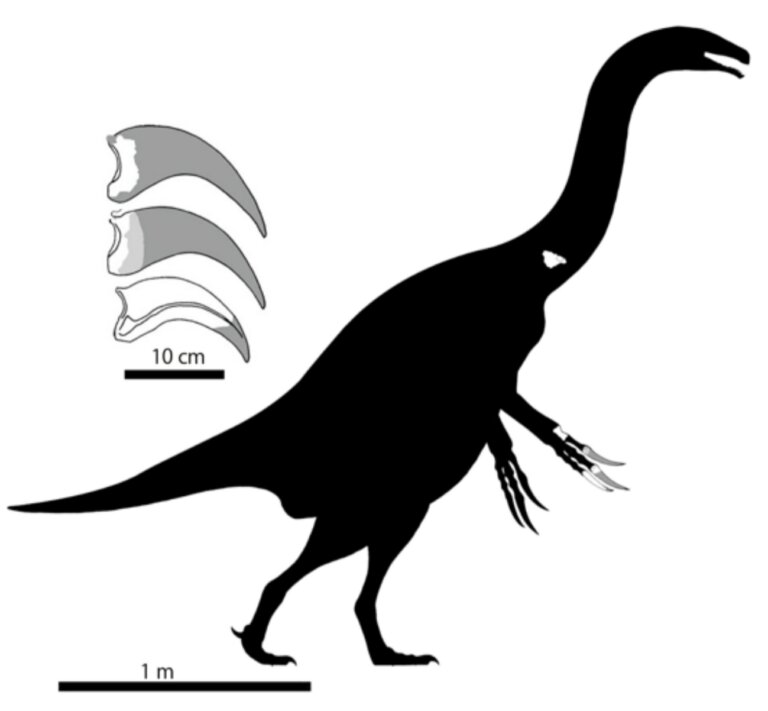Paleontologists have described a new dinosaur from the therizinosaur group, whose fossils were found in
Therizinosaurs were a large grouppredominantly herbivorous theropod dinosaurs (dinosaurs with hollow bones and three-toed limbs). They were first discovered in Asia. While Asian countries such as China and Mongolia are known to have a lot of therizinosaur fossils, they are not so common in Japan.
Scientists from Japan and the USA, led by ProfessorYoshitsugu Kobayashi of the Hokkaido University Museum and Anthony R. Fiorillo of Southern Methodist University have described a new species of therizinosaurid from Japan. They also re-evaluated the function of the therizinosaur's claws. The scientists' findings were published in the journal Scientific Reports.
 Claws and life reconstruction of Paralitherizinosaurus japonicus. Credit: Genya Masukawa
Claws and life reconstruction of Paralitherizinosaurus japonicus. Credit: Genya Masukawa
The fossil described in this work consists ofa partial vertebra and part of a wrist and forefoot, originally collected in 2008 from the Osushinai Formation, Hokkaido. The remains were believed to be those of a therizinosaur. However, a lack of comparative data at the time made confirmation impossible.
With database updates and technology developmentscientists conducted a comparative analysis of therizinosaur claws, including data on the new species. It turned out that in advanced therizinosaurs, including P. japonicus, the flexor tubercle of the ungual phalanx, which serves as the attachment point for the deep flexor digitorum tendon, was smaller than in primitive ones. This confirms previous results: the claws of advanced therizinosaurs were less functional, that is, for example, they were not suitable for digging, but they were quite suitable for pulling tree branches to their mouths. Previously, scientists found that therizinosaurs were herbivores - this is indicated by small lanceolate teeth and a large intestine.
Read more
Something strange is happening in the Universe: how to explain inconsistencies in the Hubble constant
The ancient city of the Mittani Empire “surfaced” from the river. He is over 3,400 years old
In 20 years everything will be different: what skills will our children need